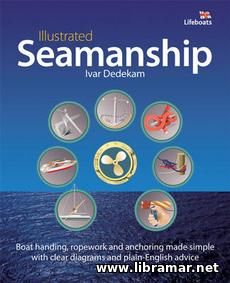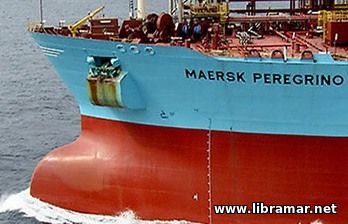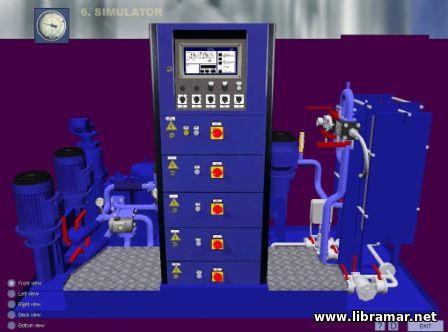Basics of Fighting Liquefied Gas Fires (Cont.)
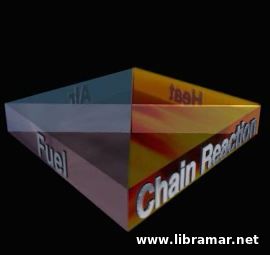
In the previous article we have talked about the common sources of fire and now let’s talk about fire extinguishing. The key to extinguishing any fire is first to control it, then the flame area can be minimized and finally the fire extinguished. It is important to understand the four components that sustain the fire – fuel, air, heat, and the chain reaction. If any of these can be removed, the fire will cease. As a result, there are four ways to fight fire. The most important is to starve the fire of fuel by shutting off supply; next is to choke off the air supply. Cooling through evaporation is essential to limit the spread of fire. Once the other elements are in place, it is possible to break the chain reaction at the source of ignition.
There are four technologies available to fight the fire. To starve the fire of fuel, there are emergency systems to shut valves and stop pumps. There are passive systems, such as melt plugs on deck which activate shutdown systems at around 100 C, there is remote control through the product management system and there is ability to shut off fuel by closing valves manually. Enclosed cargo machinery spaces are provided with the fixed fire extinguishing systems suitable for the cargo carried to smother the fire. However, it is important to evacuate spaces before they are used. CO2 released at pressure can cause ignition through static electricity so it must only be used to extinguish fires and never be used to inert spaces not on fire.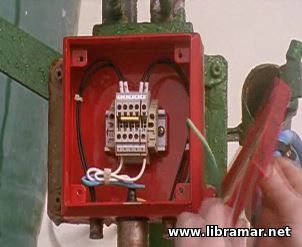
Outside, the key to smothering is high expansion foam. While rarely successful in extinguishing liquefied gas fires unaided, foam is invaluable in reducing the rate of burning of pool fires in drip trays and bounded areas. Once again, if the fire is to be got under control, it is essential to reduce the radiant temperature rapidly. Foam acts to reduce the vapor emission. And, if the vapor is unignited, helps minimize the risk of ignition. Large amounts of foam are required. For LNG and LPG the foam, if available, should be optimized to create a blanket to minimize vaporization through insulation and by reducing contact with air. By its nature, foam is ineffective against jet fires.
Water is the most effective medium for cooling. Gas containers are deluged to reduce the evaporation rate due to the heat of the fire. Large volumes of water may be supplied by firefighting tugs. Water is used to reduce damage to pipes and valves, to protect personnel operating valves, or to create a barrier to prevent the fire spreading from vessel to shore. Water can also be used to disperse gas, but it does not normally extinguish the fires unless the gas can be dispersed by water spray at high volume and pressure. However, water must be used with care, especially where liquid gas has pool – in such case its effect may cause liquid to boil faster and make the fire more difficult to control.
Newer technologies, such as water mist, both cool and smother the fire. Inhibiting agents are the key to extinguishing fires. Dry chemical powder is the most common inhibitor. It works by breaking the chemical reaction of the burning process. For a pool fire, the idea is to create an envelope over the liquid gas – the normal technique is to work from front to back, taking care not to stand on the extinguished liquid. Care must also be taken not to disturb the surface as this reduces the effect and can spread the fire.
However, once extinguished, as hot surfaces and liquid gas are both present, the vapor will often reignite. Equally, any flame left after the attack will reignite the pool, so it is best to delay the attack until sufficient dry powder is available to kill the fire in one go. In shore installations, dry powder is often used in conjunction with foam to extinguish any remaining flames above the foam blanket. However, care must be taken to ensure that the dry powder employed is compatible with the foam. Dry powder is also effective in extinguishing jet fires if the right techniques are used.
 Frontal or side attack rarely works merely being deflected by the jet of flame. Powder is best aimed at the base of the fire from behind so that the powder follows the direction of the flame and breaks the chemical reaction. Although the fire may have been extinguished, large quantities of unignited gas may still be released unless the source is controlled. For enclosed spaces, such as compressor rooms, there are also gaseous extinguishing agents that act through chemical inhibition rather than oxygen depletion.
Frontal or side attack rarely works merely being deflected by the jet of flame. Powder is best aimed at the base of the fire from behind so that the powder follows the direction of the flame and breaks the chemical reaction. Although the fire may have been extinguished, large quantities of unignited gas may still be released unless the source is controlled. For enclosed spaces, such as compressor rooms, there are also gaseous extinguishing agents that act through chemical inhibition rather than oxygen depletion.
In emergencies events escalate rapidly but a rapid response depends on everyone playing their part. Emergency plans are essential for both terminal and vessel. The plan must be updated regularly and understood by all crew and staff. Emergency control must be responsibility of the identified officer or manager. Firefighting roles must be identified; isolation and fire response actions must be coordinated. To achieve this, there must be a pre-arranged shutdown and system isolation plan.
STCW and SOLAS for vessels require that crews and staff are trained in firefighting. Practice drills shall be held regularly. Each drill should include briefing before and the assessment after the exercise. Fire and gas systems should be tested regularly. Every member of the firefighting team should wear the correct PPE and practice putting it on fast, practice working in difficult conditions and practice using the emergency escape breathing device. In addition to the on-site or on-vessel training, it is good practice to undertake training with real fires in a controlled environment ashore, known as hot training. In some countries, hot drill is a regular drill requirement.
Other good practice includes recommendation to make the fire rounds inside accommodation after a watch, reporting fire hazards and near misses and maintaining a vessel specific fire training manual. Ideally, no one shall ever have to fight a fire. If they do, it is because someone or something has failed. And the point of greatest risk is during product handling. The best defense against fire is prevention through personal training, risk awareness, and product familiarization. Clear and simple product handling procedures are essential. Maintaining strict adherence to this, especially regarding fire hazards, is key to reducing risk. Each product has an MSDS describing its characteristics and procedures to be followed. Vigilance is essential, especially during product operations.
Pre-arrival checks should be undertaken by both vessel and terminal. They should be thorough, follow checklists and the results  should be recorded. On arrival, the ship-shore safety checklist should be completed jointly before cargo operations begin. There should be regular inspections and maintenance of systems such as valves, pumps and seals, gauges, hoses, manifolds and pressure management systems. Accurate record keeping of inspections and maintenance is essential. On the vessel, the fire wallet must contain an up-to-date crew list, cargo plan and fire plan identifying the type and location of firefighting equipment.
should be recorded. On arrival, the ship-shore safety checklist should be completed jointly before cargo operations begin. There should be regular inspections and maintenance of systems such as valves, pumps and seals, gauges, hoses, manifolds and pressure management systems. Accurate record keeping of inspections and maintenance is essential. On the vessel, the fire wallet must contain an up-to-date crew list, cargo plan and fire plan identifying the type and location of firefighting equipment.
For vessels, these principles apply equally to any visits to dry dock and repair yards. Fire rounds, daily safety meetings and inspection of vital equipment shall all continue as normal. If a fire starts, it is too late to test equipment. Rapid deployment is crucial. All firefighting clothing should be checked, breathing apparatus should be tested and tanks pressurized. Regular inspection and testing should include gas and fire detection systems, automatic and manual emergency shutdown systems, fire pumps, water, dry powder, inert gas and foam systems.
Handled properly, liquid gas is very safe. This industry’s safety record has been achieved by high levels of training, good equipment design and by implementing systems and procedures developed through experience over many years. Your safety depends on understanding the nature of liquefied gas, understanding the risks involved in product handling and following agreed procedures precisely.
 Regular inspection and maintenance of product handling systems will go a long way to preventing failures that result in fires. Beyond that, regular inspection and maintenance of firefighting systems together with understanding and practicing firefighting techniques will ensure that should the worst happen, you will be able to respond effectively to manage the hazard. The more closely these principles are followed, the less likely you are to have to employ your firefighting skills in practice.
Regular inspection and maintenance of product handling systems will go a long way to preventing failures that result in fires. Beyond that, regular inspection and maintenance of firefighting systems together with understanding and practicing firefighting techniques will ensure that should the worst happen, you will be able to respond effectively to manage the hazard. The more closely these principles are followed, the less likely you are to have to employ your firefighting skills in practice.
The "Read Later" function allows you to add material to this block with just one click. Just click on the icon and read the articles that interest you at any convenient time.
